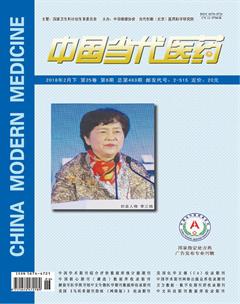可视双腔支气管导管在肺隔离技术中的应用价值
吕磊 王治 刘秀文
[摘要]目的 探讨可视双腔支气管导管在肺隔离技术中的应用价值。方法 选择2016年10月~2017年2月在我院治疗的胸腔镜辅助下行单肺通气的60例患者为研究对象,采用随机数字表法分为纤维支气管镜组(F组)和可视双腔支气管导管组(VD组),每组30例。F组患者采用普通双腔支气管导管借助纤维支气管镜进行定位,VD组采用可视双腔支气管导管进行定位。记录F组和VD组的导管定位时间、术中导管移位次数、导管移位致不良事件发生次数(手术侧肺萎陷不佳影响术野、健侧肺通气不足、肺不张等)、导管移位后重新调整定位时间。结果 VD组定位时间短于F组(P<0.05);两组患者变动体位后导管移位发生率差异无统计学意义(P>0.05);导管移位后发生肺萎陷不佳影响术野、肺通气不足、肺不张等并发症,VD组不良事件发生率低于F组,差异有统计学意义(P<0.05),VD组导管移位后重新调整定位时间明显短于F组,差异有统计学意义(P<0.05)。结论 可视双腔支气管导管在导管定位、持续监测方面较纤维支气管镜有优势,在肺隔離技术有很好的应用前景。
[关键词]可视双腔支气管导管;肺隔离; 胸科手术
[中图分类号] R614 [文献标识码] A [文章编号] 1674-4721(2018)2(c)-0028-03
[Abstract]Objective To explore the application value of visual double-lumen bronchial catheter in pulmonary isolation.Methods 60 patients with one lung ventilation assisted by video-assisted thoracoscopic surgery who were treated in our hospital from October 2016 to February 2017 were selected as subjects.They were randomly divided into fiberoptic bronchoscopy group(group F) and visual double lumen bronchial catheter group (group VD),with 30 cases in each group.Patients in group F were positioned with the help of fiberoptic bronchoscopy,and patients in group VD were positioned with the help of visible double lumen bronchial catheter.The catheter positioning time,the number of catheter displacement during operation,the number of adverse events caused by catheter displacement in group F and VD were recorded (poor collapse of the lung on the operation side affected the operation field,insufficient ventilation on the healthy side,atelectasis,etc.),and the positioning time was readjusted after catheter displacement.Results The localization time of group VD was shorter than that of group F,there was no significant difference between the two groups(P<0.05).The incidence of adverse events in group VD was lower than that in group F (P<0.05).The repositioning time of group VD after catheter displacement was significantly shorter than that in group F,the differents was satistically significant (P<0.05).Conclusion The visual double-lumen bronchial catheter is superior to the fiberbronchoscope in the catheter positioning and continuous monitoring.It has a good application prospect in the lung isolation technology.
[Key words]Visual double-lumen bronchial catheter;Pulmonary isolation;Thoracic surgery
随着胸外科手术的不断进展,电视胸腔镜手术(video assisted thoracoscopic surgery,VATS)成为今年来在临床中普遍应用的一种胸部微创手术,该手术对于单肺通气质量有很高的要求,需要有良好的肺隔离技术。临床上常用的双腔支气管导管定位的方法主要有听诊法、回退法[1]、体表标志及阻力变化定位法[2-3]、呼气末二氧化碳分压与吸气分压监测法[4-5] 、纤维支气管镜(fiberoptic bronchoscope,FOB)法等,FOB自1986年后逐步应用于双腔支气管导管的定位,是目前临床采用最多、最可靠的定位方法[6-9],然而由于其不能进行持续监测,在肺隔离技术定位方面还有待创新。近年来,随着超声技术的发展与普及,超声技术应用于胸科手术中在双腔支气管导管定位方面具有无创、定位准确、成功率高等优点[10],同时可以通过测量气管外径来预测双腔导管型号[11],然而在术中持续监测、价格等方面与FOB相比并没有优势,限制了其在临床中作为常规应用于导管定位,而可视双腔支气管导管的问世正好弥补了这些缺陷。本文通过与纤支镜对比,评价可视双腔支气管导管用于肺隔离技术的效果,现报道如下。

